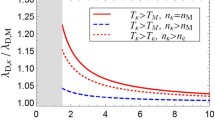In our previous paper [1] it was shown, using the theory of antennas in plasmas, that the effective length leff of a receiving dipole antenna can be much larger than its geometric length in case quasielectrostatic chorus emissions propagating close to the resonance cone are received. In order to simplify calculations of leff, it was proposed to use a model (“effective”) source of such emissions because taking into account all of the real source properties (that are determined by the nonlinear processes of interaction between waves and charged particles in a wide region of space) would lead to unreasonably cumbersome calculations. The present paper analyzes how the effective length of the spacecraft-borne receiving antenna depends on the parameters of the space charge distribution in the model source of quasi-electrostatic chorus emissions. It is found that the length leff decreases as a power function (with exponent −1/2) with increasing distance (along the group velocity resonance cone) between the model source and the receiving antenna. This relationship is correct up to the distance at which the effective length becomes of the order of the geometric length. At longer distances, the radiation field loses its resonance nature because of the excitation of an electromagnetic (quasi-longitudinal) wave. It is shown that under conditions of the Earth’s magnetosphere, the approximation we used can remain valid up to distances of the order of the geomagnetic field line length, which confirms the importance of the discussed effect for correct interpretation of the electric wave measurement data in the whistler-mode frequency range. It is also shown that the length leff changes by less than 10% when the characteristic scale of spectrum of the charge distribution along the model source varies as Δ ∼ (0.1–1.0) kobs, where the wave number kobs corresponds to the observed spectral maximum of radiation at a given frequency.
Similar content being viewed by others
References
E.A. Shirokov, A.G. Demekhov, Yu.V.Chugunov, and A.V. Larchenko, Radio Sci., 52, No. 7, 884 (2017).
G. A. Morin and K. G. Balmain, Radio Sci., 28, No. 2, 151 (1993).
M. Tsutsui, I. Nagano, H. Kojima, et al., Radio Sci., 32, No. 3, 1101 (1997).
Yu. V. Chugunov, Radiophys. Quantum Electron., 44, Nos. 1–2, 151 (2001).
Y. V. Chugunov, E. A. Mareev, V. Fiala, and H. G. James, Radio Sci., 38, No. 2, 1022 (2003).
Y.V. Chugunov and V. Fiala, IEEE Trans. Antennas Propag., 54, No. 10, 2750 (2006).
Y. V. Chugunov, V. Fiala, M. Hayosh, and H. G. James, Radio Sci., 47, No. 6, RS6002 (2012).
Yu.V. Chugunov and E.A. Shirokov, Cosmic Res., 54, No. 3, 198 (2016).
C. A. Balanis, Antenna Theory: Analysis and Design, 4th edition, Wiley, Hoboken (2016).
E.A. Mareev and Yu. V. Chugunov, Antennas in Plasmas [in Russian], Inst. Appl. Phys., Rus. Acad. Sci., Nizhny Novgorod (1991).
A.A. Andronov and Yu.V. Chugunov, Sov. Phys. Usp., 18, No. 5, 343 (1975).
W.C. Chew, J.-M. Jin, E. Michielssen, and J. Song., eds., Fast and Efficient Algorithms in Computational Electromagnetics, Artech House, Norwood (2001).
Yu.V. Chugunov, Radiophys. Quantum Electron., 11, No. 12, 1033 (1968).
Yu.V. Chugunov, E. A. Shirokov, and I.A. Fomina, Radiophys. Quantum Electron., 58, No. 5, 318 (2015).
R. A. Helliwell, Whistlers and Related Ionospheric Phenomena, Stanford University Press, Stanford (1965).
V. Y. Trakhtengerts, J. Geophys. Res. Space Phys., 100, No. A9, 17205 (1999).
V. Y. Trakhtengerts, Ann. Geophys., 17, No. 1, 95 (1998).
Y. Omura, Y. Katoh, and D. Summers, J. Geophys. Res. Space Phys., 113, No. A4, A04223 (2008).
A. G. Demekhov, U. Taubenschuss, and O. Santolík, J. Geophys. Res. Space Phys., 122, No. 1, 166 (2017).
M.V. Fedoryuk, The Saddle-Point Method [in Russian], Librocom, Moscow (2010).
V. L. Ginzburg, The Propagation of Electromagnetic Waves in Plasmas, Pergamon Press, Oxford (1970).
T. H. Stix, Waves in Plasmas, Springer-Verlag, New York (1992).
O. Santolík, M. Parrot, and F. Lefeuvre, Radio Sci., 38, No. 1, 1010 (2003).
J. L. Burch and V. Angelopoulos, eds., The THEMIS Mission, Springer-Verlag, New York (2009).
O. V. Agapitov, A.V.Artemyev, D. Mourenas, et al., J. Geophys. Res. Space Phys., 119, No. 3, 1606 (2014).
A. Roux, O. L. Contel, C. Coillot, et al., Space Sci. Rev., 141, Nos. 1–4, 265 (2008).
J. W. Bonnell, F. S. Mozer, G.T. Delory, et al., Space Sci. Rev., 141, Nos. 1–4, 303 (2008).
H. U. Auster, K.H.Glassmeier, W. Magnes, et al., Space Sci. Rev., 141, Nos. 1–4, 235 (2008).
E.A.Mareev and Yu.V. Chugunov, Radiophys. Quantum Electron., 30, No. 8, 713 (1987).
H. G. James, in: Lecture Notes in Physics, Vol. 687, Geospace Electromagnetic Waves and Radiation, Springer, Berlin (2006), p. 191.
Author information
Authors and Affiliations
Corresponding author
Additional information
Translated from Izvestiya Vysshikh Uchebnykh Zavedenii, Radiofizika, Vol. 62, No. 2, pp. 136–146, February 2019.
Rights and permissions
About this article
Cite this article
Shirokov, E., Demekhov, A.G. Impact of the Space Charge Distribution in the Model Source of Quasi-Electrostatic Whistler-Mode Waves on the Effective Length of a Short Receiving Antenna. Radiophys Quantum El 62, 123–132 (2019). https://doi.org/10.1007/s11141-019-09960-3
Received:
Accepted:
Published:
Issue Date:
DOI: https://doi.org/10.1007/s11141-019-09960-3



